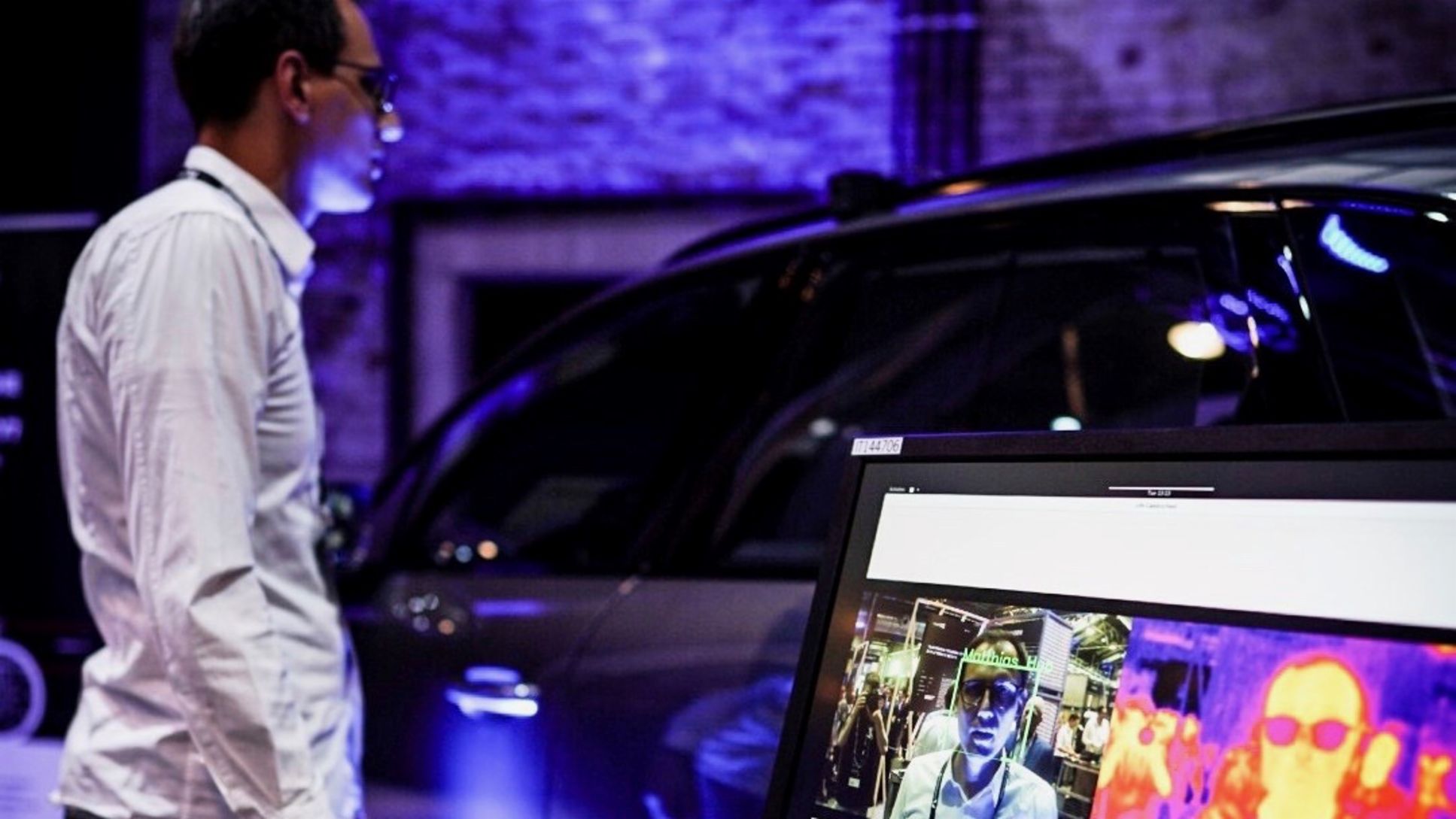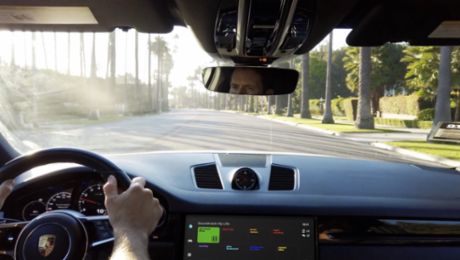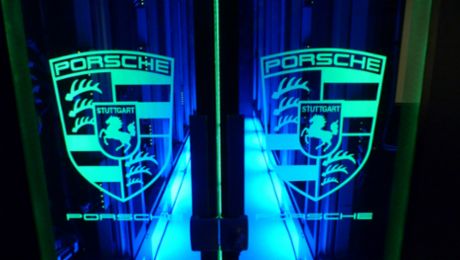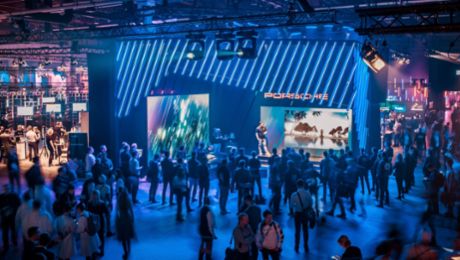It was about enabling the driver to open his car without a key and any friction, even when the vehicle is offline. We successfully realized it within 100 days as part of the Startup Autobahn accelerator program — and are now hooked with the possibilities of edge computing for the automotive industry.
The technology’s capabilities go far beyond this one use case — edge computing offers a variety of approaches for innovative applications and enhancements to the user experience in the vehicle. In the following, I would like to give you a short introduction to the fascinating world of edge computing and give a quick overview of possible use cases to bring this technology into our daily lives.
But first: What is Edge Computing?
Edge computing focuses on the data that is close to where it is created, such as a smartwatch, an industrial robot, or a vehicle. The term thus complements the term cloud computing, which refers to the computing power in data centers. However, the above-mentioned intelligent devices are not as powerful in terms of computing power and memory as computers in data centers — at least yet. These resource constraints limit the applications that can run on these devices. For this reason, edge devices and cloud computing are typically used in combination: The resulting data volumes are distributed among various edge devices and cloud services. Edge computing is used to a greater extent when fast reactions and real-time capabilities are required. The cloud acts as a kind of central data collection point for analytics, machine learning, and process control.
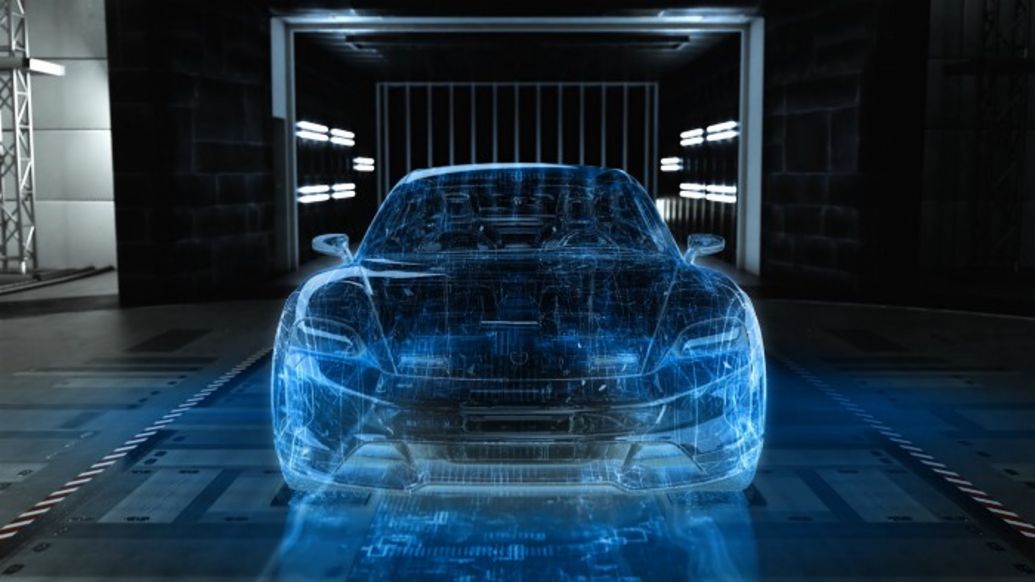
Here are seven use cases where edge computing can be a great plus in the vehicle:
1. Sensor fusion and value aggregation to protect sensitive data in the car
Generally speaking, a lot of sensors are built-in everyday devices. From a gyro sensor in mobile phones to humidity sensors in a smart home, there is a wide range of different sensor types, form-factors, and models. They all have one thing in common: they usually generate a large amount of data.
This also applies to a large number of sensors in vehicles. Although most of the data can be processed in the car, some applications, such as alerting in the event of deviations from the norm, require data to be moved to the cloud. Edge computing helps to limit the amount of data that is pushed out in a smart way, which reduces the data transmission costs and also reduces the amount of sensitive data leaving the vehicle.
2. Autonomous driving and smart infrastructure for efficient mobility
Autonomous driving capabilities are a very special edge computing case, as there is quite some compute power necessary to run the driving algorithms in real-time within the control unit in the vehicle. Another usage of a “fat edge” can be found in smart infrastructures like e.g. 5G base stations, traffic lights or intermediate smart routers. This enables, for example, a much higher efficiency and throughput at intersections.
Let’s use as an example a complex and heavily used intersection with five roads and long waiting times for each vehicle when using traffic lights. Autonomous driving alone would not eliminate waiting times, as it respects the timing of the traffic lights. But when at the intersection an edge node is installed to which the vehicles connect when approaching the intersection, they can receive their trajectories from the edge node. This edge node can do an orchestration of all the nearby vehicles instead of the separate computation of each vehicle.
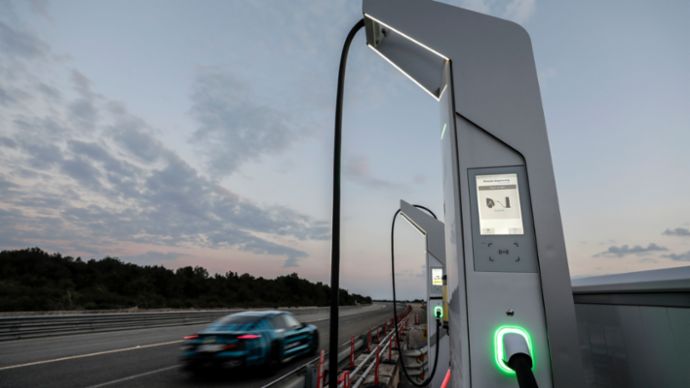
If this solution is then extended to include charging planning for electric vehicles, mobility can become even more efficient. The edge node at the charging station then would be able to plan upcoming charging processes and optimize the reservations according to various criteria including waiting time or maximum charging rate.
3. Machine Learning for intuitive infotainment systems
The infotainment system in a vehicle is a very prominent user interface besides the driving controls. To learn what functions and applications users are really using and where the interaction design should be optimized — whether it is the touch or voice interface — machine learning algorithms are an important tool to find relevant insights into the vast amount of available data. Edge computing helps to bring machine learning models, which were trained in the cloud, easily to the device. Therewith the local available behavioral and sensor data can be used for predictions to improve user interaction.
In the post personal assistant era, it is as expected that the interaction will get simpler over time, as the system learns the behavior or some environmental constraints.
4. Adaptive predictive maintenance on electric vehicle battery based on usage an
As Porsche is known for performance and high driver engagement, the battery in our vehicles with an electric drive needs to deliver this at their possible best. To achieve this, battery monitoring and predictive maintenance is an essential part. Battery maintenance and charging depend on dynamic situations after the car is actually shipped out: tire pressure, acceleration, traffic, charge cycles, driver habits, etc. A possible solution needs to consider usage data as well, which is not available at point of production, and this can then e.g. adapt the suspension based on the drivers’ personality.
Edge computing can enable this with the ability to aggregate data and near real-time evaluation of relevant battery parameters and sensor values. As this has a direct influence on the customer experience, it is very relevant for car manufacturers and car network providers with electric vehicles in their fleets, for example.
5. Multi-factor authentication for an easy, keyless entry
I already mentioned this one in the beginning: This case is about providing a frictionless entry to the car based on multiple security factors — and therefore allowing customers to open the drivers’ door of their car without any friction. This is achieved by using 1) a camera for face recognition, 2) an infrared camera for spoofing detection and 3) a Bluetooth sensor to detect the proximity of the driver’s mobile phone. These three factors are examples of driver authentication using multiple factors.
Together with FogHorn, we wanted to find out how this use case can actually work when the vehicle is offline and thus is not able to access any resources from the internet. As you can see in the video, it worked!
6. Smart Home and Vehicle Integration: Park yourself
At the intersection of increasing smart homes and Porsche as a luxury brand, there are quite a few cases that require computing power at the edge. For example, there could be a valet to home service, which allows the user to leave their car in the driveway and just get out. The car will park itself in the garage. Based on the owner’s personal calendar plan, the car can also autonomously drive out of the garage and get ready for a new start. To enable this application, however, autonomous driving capabilities are required.
7. Generic Rules and Machine Learning based Monitoring and Alerting for the Car
Car network providers will have to manage systems with respect to their fleet — so they will have a lot of additional monitoring and rules that will need to be built. To give one example of such a rule: “Don’t dispatch this car because it is up for service in the next 50 miles if a customer is booking it for a four days trip — meaning that it’s very likely to travel more than the 50 miles left”.
Edge Computing can process available sensor data and evaluate the rules and machine learning algorithms directly within the car without the need to involve the cloud at all. The cloud computing power can be used to train and refine the machine learning algorithms which are needed to detect the specific scenarios. Also, the definition of the rules can be done in the cloud and then pushed down to the edge whenever an update is made.
What’s next?
By now, you may have an impression of the functionality and the possibilities that edge computing opens up for the automotive industry. I am more than excited to continue to work on optimizing the driver experience of our customers through innovative intelligent systems. Stay tuned!
